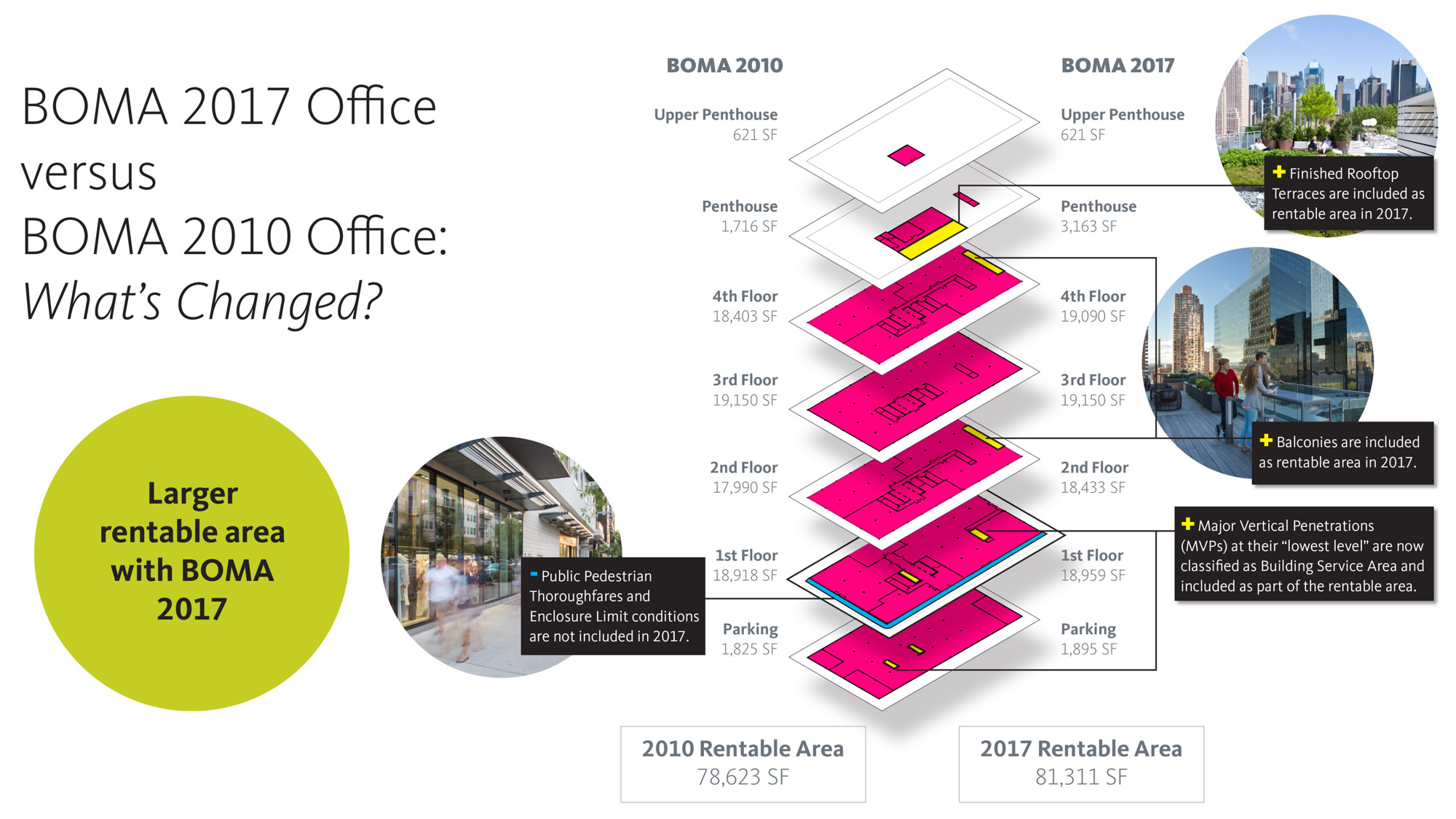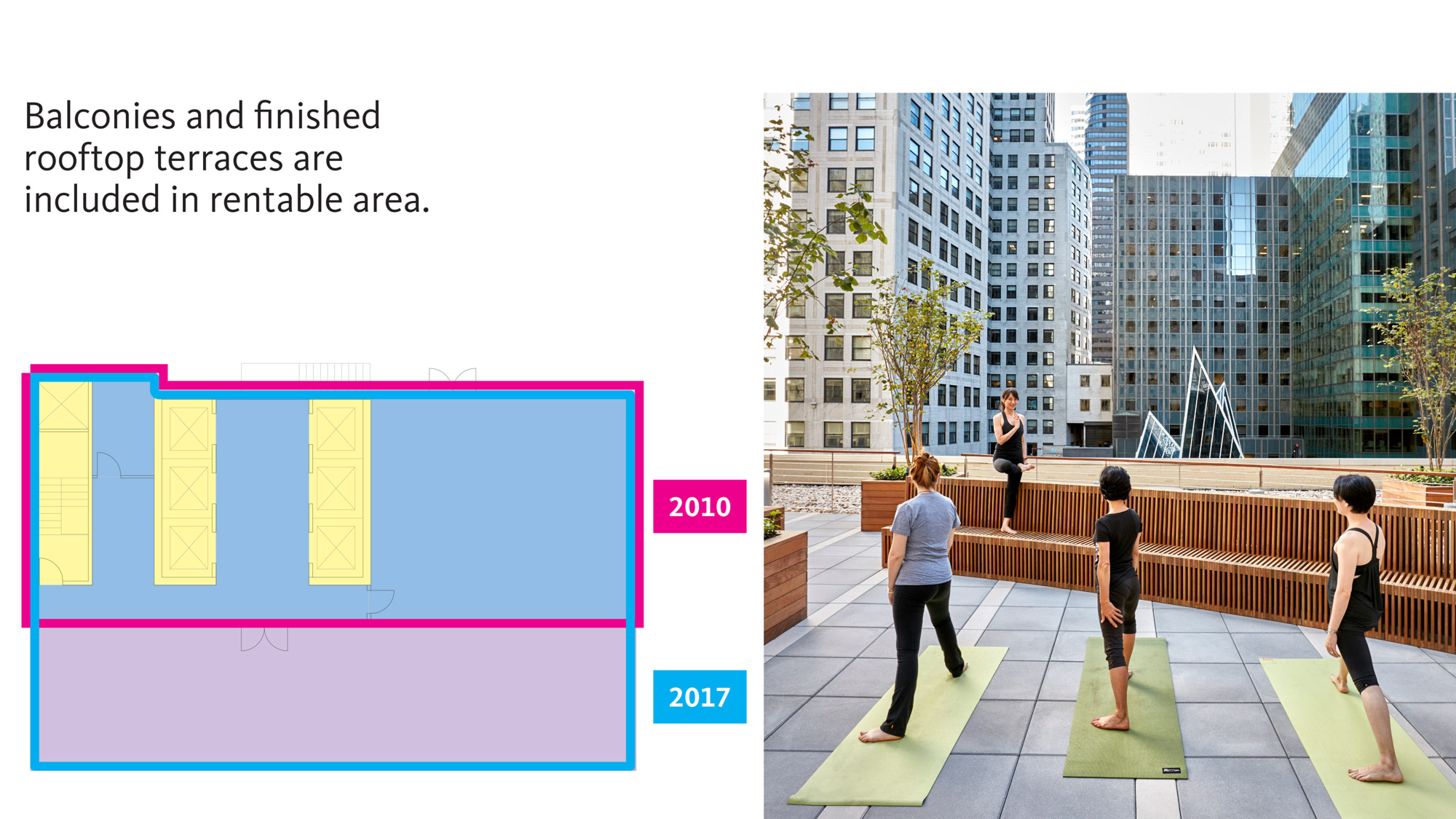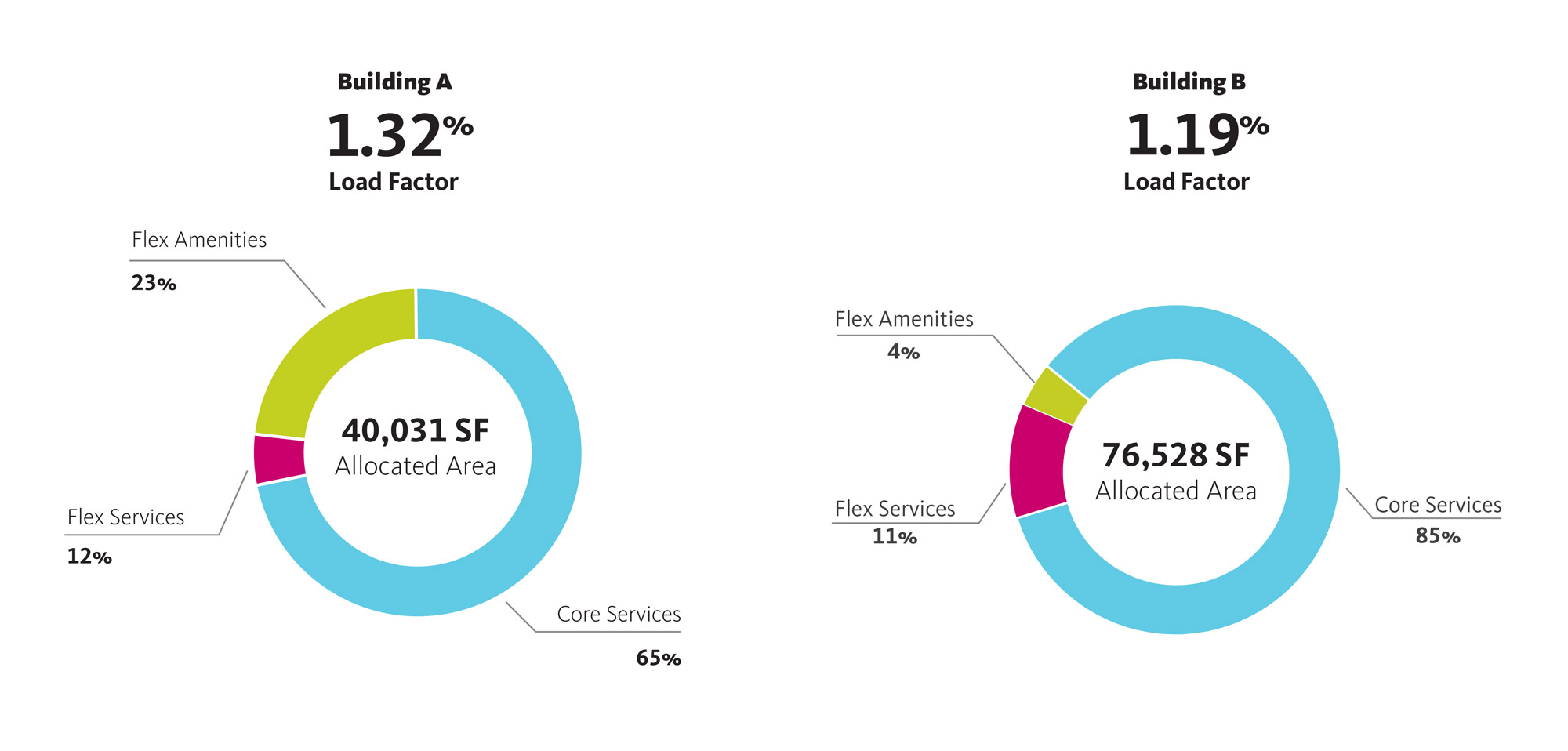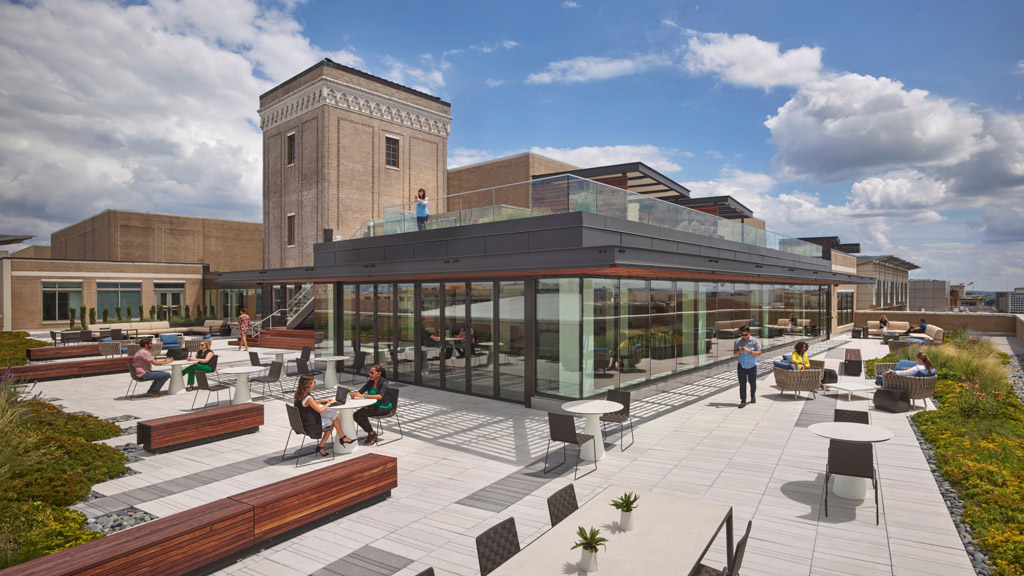Did Your Building Grow With BOMA 2017 Office?
By Mitch Luehring
As we’ve seen in Gensler’s 2019 U.S. Workplace Survey, work-focused amenities that support people’s ability to choose where and how they work have the greatest impact on their experience and effectiveness in the workplace. At the same time, our research suggests that access to fresh air, operable windows, and outdoor space greatly improves people’s experience at work. Combine those two factors and it’s no surprise that developers, landlords, and building owners have been adding balconies, patios, and other outdoor amenities to keep up with tenant demand in both new office designs and repositioning projects.
As a result of these recent investments in outdoor space, the Building Owners and Managers Association International (BOMA) updated its industry guidelines in 2017 to count some outdoor square footage towards a building’s rentable area calculations. Since the rollout of the ANSI/BOMA Z65.1-2017 standard, our team has measured over 100 million square feet of commercial office space, looking for deeper insights into how rentable square footage has changed in the past few years — both due to the new measurement standard and the trends changing the composition of space.

Of all the updates in the latest standard, this addition of outdoor space is having the greatest impact on area metrics for a building. We’ve seen increases of less than 1% all the way up to 10% and above in the total rentable area — depending on the amount and type of outdoor space. While there is a clear benefit of achieving higher rentable area for a building owner, the new standard and the amenity trends are also creating some confusion and leasing challenges.
Balconies or terraces for the exclusive use of a building tenant are treated as rentable area in the same manner as the office suite. However, depending on the market, this space may not be leasable on the same terms as the office suite. If a team doesn’t want to take on the challenge of leasing an outdoor space, they may wish to measure to an older standard (BOMA 1996 or 2010 Office) that does not include it. This creates a higher cost per square foot and the balcony can be marketed as added square footage that’s not directly paid for. The opposite strategy is also an option: maximize the rentable area by measuring to the BOMA 2017 standard and including the tenant’s outdoor space. Then, the cost per square foot may be kept lower and marketed as an attractive option for tenant prospects.

Outdoor spaces that are shared amongst the building’s tenants are allocated through the load factor. Higher load factors are a reality that came along with the tenant amenities trend — and the inclusion of outdoor amenities in the BOMA 2017 Office Standard can push them even higher.
While building owners could avoid raising the load factor by including leased amenity spaces in their building, another strategy would be to change the conversation on this metric entirely. In the past, a high load factor could indicate an inefficient use of space, but now amenities are a key factor. By the new standard, if two buildings are compared side-by-side and one has few shared amenities, it will likely have a low load factor. On the other hand, if a higher load factor is attributable to increased amenity space that can be used by the tenants, this needs to be communicated.

Lastly, the standards always provide the opportunity to cap load factors. When faced with this option and whether to apply the 2017 Office standard, think of it this way: if your rentable area increases by 5,000 square feet and you need to “cap off” 3,000 square feet to keep your load factors competitive, you have still gained 2,000 square feet. And, there is still 3,000 square feet in your building that you may be able to lease in the future.
We’ve seen that there are advantages and challenges with adopting the BOMA 2017 Office Standard. On one hand, in-demand outdoor amenity spaces may be captured as rentable area. On the other, these amenities bring along their own challenges in terms of leasing and load factors. Even so, our measurement team has seen a 55% adoption rate of BOMA 2017 since the new standard’s launch. With amenity-rich buildings continuing to trend upwards as tenants drive demand, we expect to see building measurement metrics evolve as we apply the latest standards to measure the built environment.
Need a BOMA Study? Learn more about Gensler’s Building Measurement Services or contact us at 844.412.9251 | .

